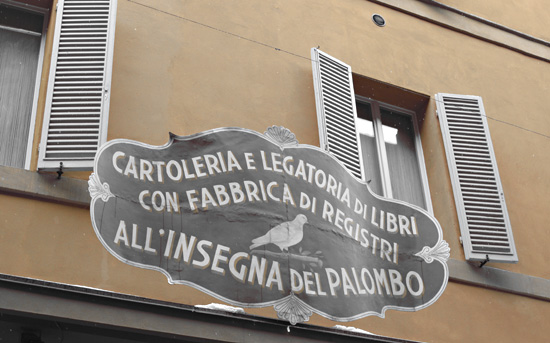
by Maureen | Feb 1, 2010 | Bologna, Cheese, Discoveries, Featured Articles, Food!, Graphics, Incredible Locations, Journal, Photo of the Day, Photos, Shopping & Markets
As a designer and artist, being here in Italy is a pilgrimage to the home of all the motifs, patterns and visual elements I’ve studied and heard of all my life. At times I’m overwhelmed, excited by the visually lush surroundings.
The storefronts and shop windows are delicious with their old-world signage and embellishments.
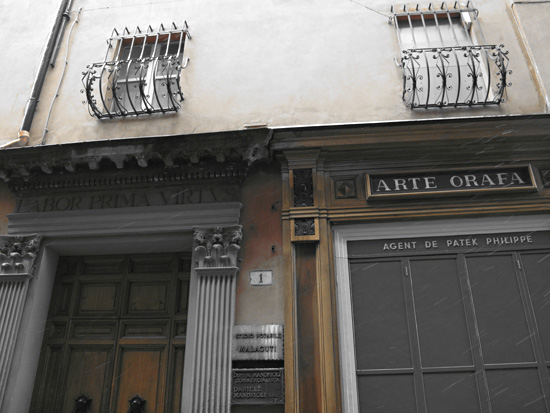

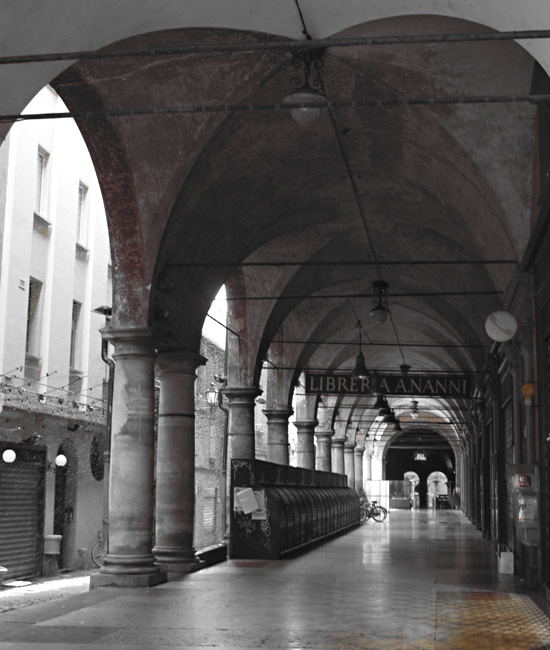
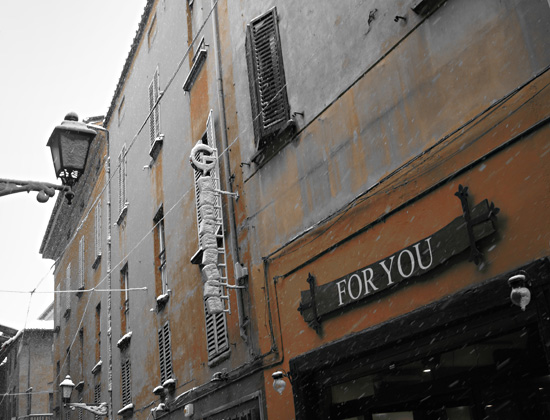
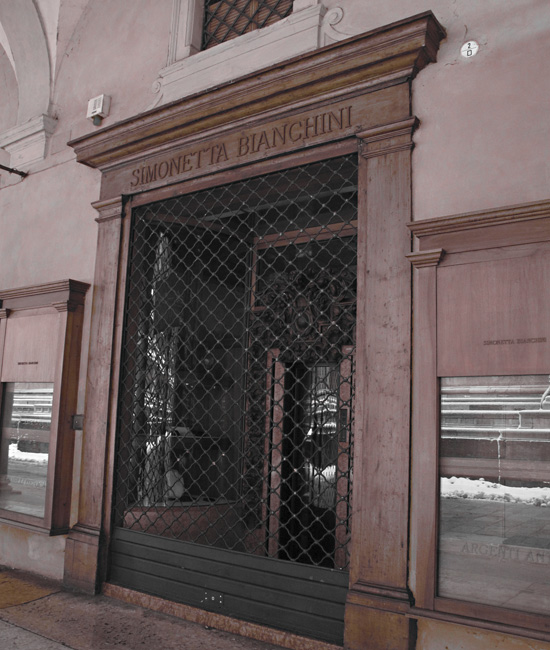
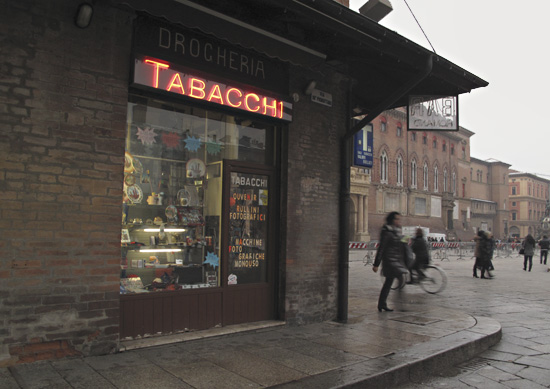
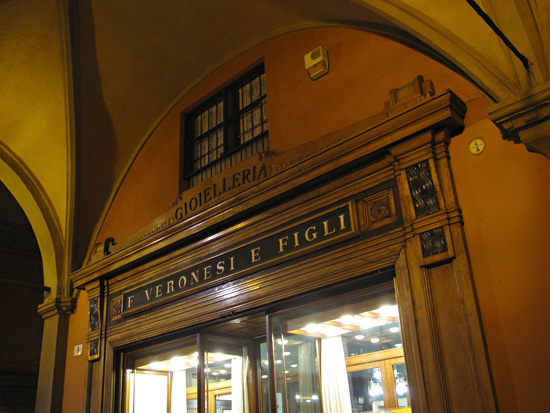
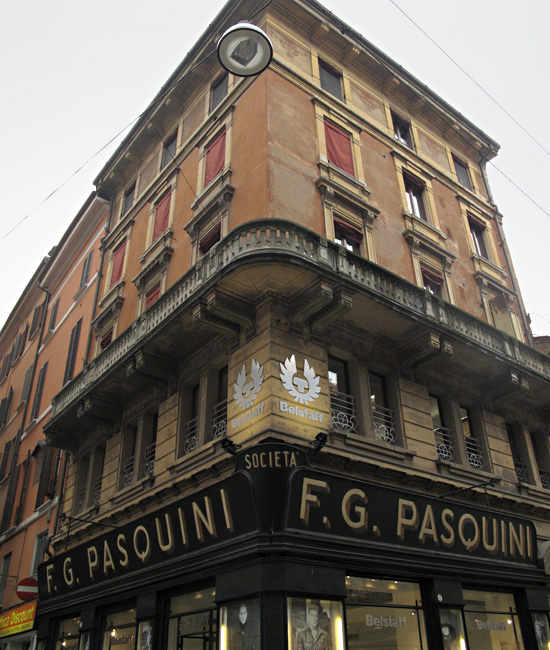
This is a contemporary storefront for a high-end clothing store. All of the furnishings are made of corrugated box stock, as well as the “chandeliers” at the ceiling.
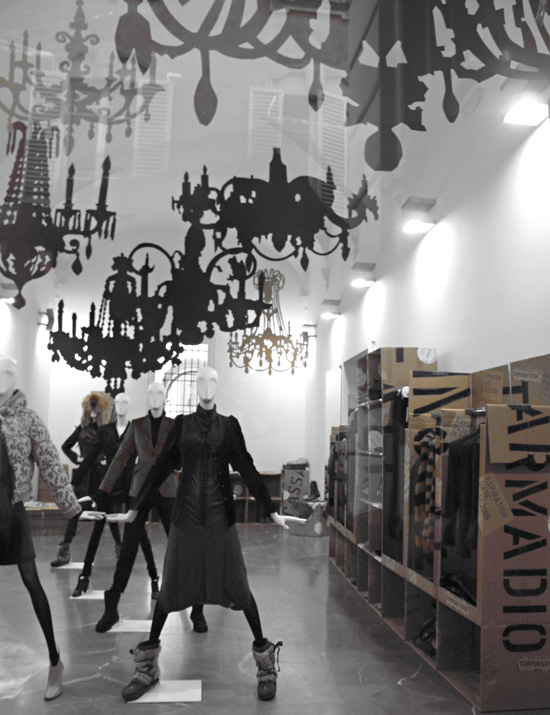
THIS is the place to buy Bolognese classic foods! The meats! The cheeses! The 40 euro ($60) 8 ounce bottles of balsamic vinegar! Mmm.
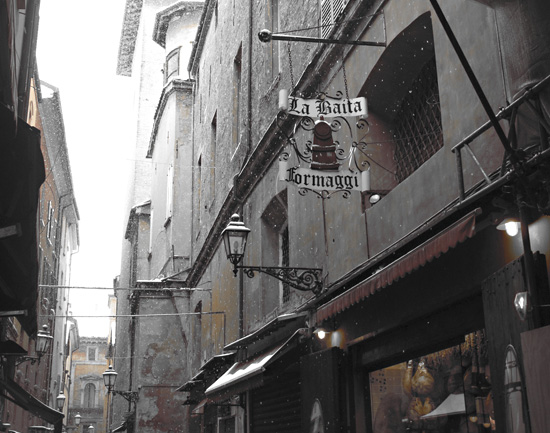
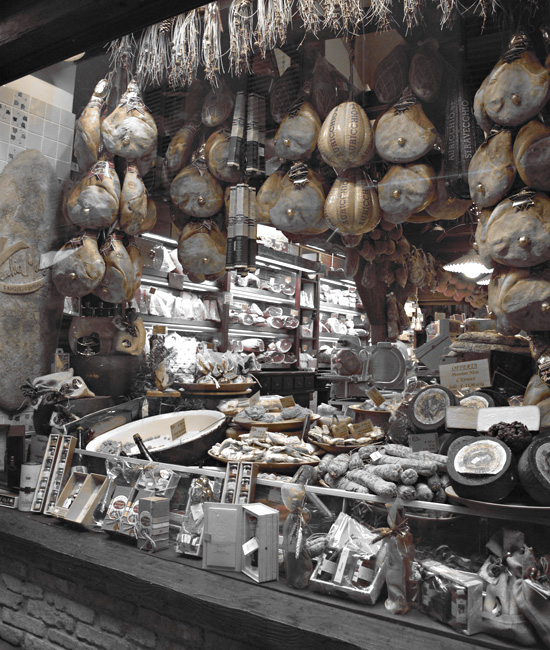
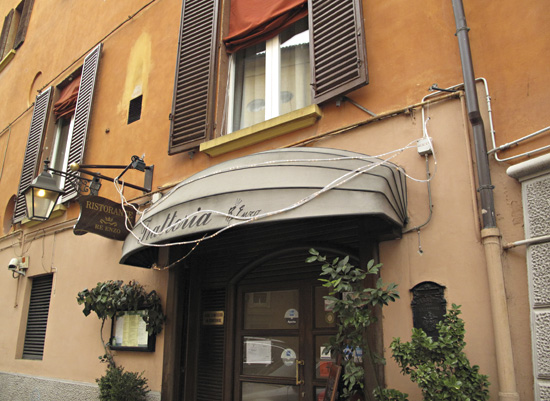
by Maureen | Feb 1, 2010 | Bologna, Discoveries, Food!, Incredible Locations, Journal, Meals, Photos
OK. So add Bologna to my list of amazing places to visit in Italy. It’s right up there with Venice, (which makes me swoon). I have a feeling the list will get VERY long.
A girlfriend from my Italian class had mentioned the citywide art fair, Bologna Arte Fiera, that was going on for a month starting 29 January. “Why don’t you come?”, she suggested. I quickly put plans in place and then hopped on the train Saturday morning.
(Side note: I had bought a ticket for the Frecciarossa fast train, which takes 1 hour instead of 3 and costs 41 euro instead of 11. I read the reader board, saw a train listed for Bologna – but with a 5 minute later departure than my scheduled train – and then hopped on the train and got settled into my seat. An hour into the ride, we weren’t even halfway there and were stopping at every little train station along the way. Uh-oh. I goofed. I had hopped on the slow train instead! Clearly I haven’t learned all the little details yet! Oh well. So I arrived later and saw each little town from the trackside. If there’s one thing I’m learning by being here, it’s to take things in stride, and let them roll off me.)
When I arrived in Bologna I walked a short distance to my hotel, I Portici, dropped my few things in the room then left and took off walking, having no idea where I was going or what there was to see! (Since making this trip was a spontaneous decision, I had only glanced at the site for the art fair, but not Bologna itself.)
I followed my “rule” of exploring the back streets, and found a little restaurant, Re Enzo Ristorante. As I was perusing the menu, the owner/waiter hustled past me with a cloud of truffle scent following him. That made my decision easy! “Scialatelli con Porcini e Tartuffo Bianco” – a wide, flat pasta noodle with porcini mushrooms and white truffles. I added some grilled vegetables to my table, and a nice Sangiovese to sip and the lunch was delicious.

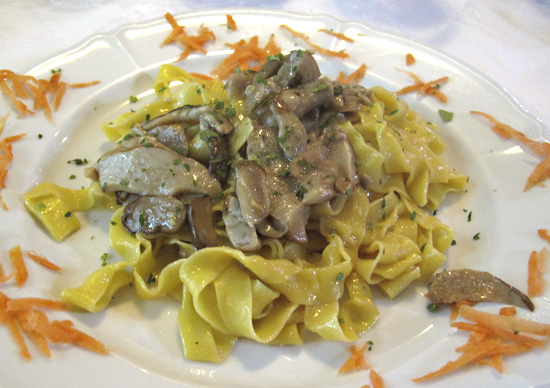
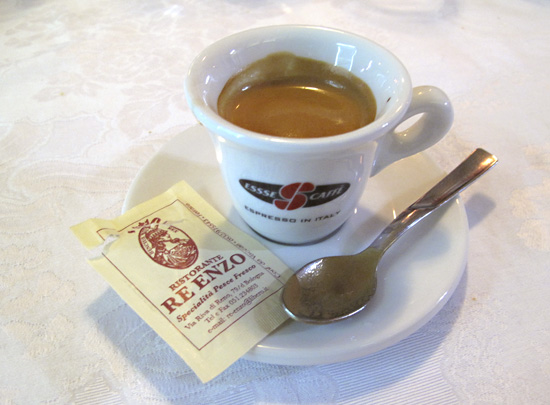
Well-fortified and hunger sated, I started walking around town taking turns whenever I wished and found my way to the historic center of Bologna, Piazza Maggiore. It was a chilly, cold day, but I was bundled up and ready for walking.
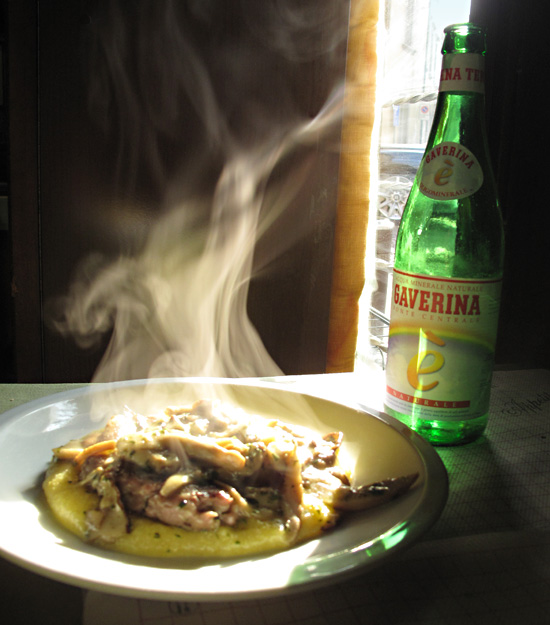
by Maureen | Feb 1, 2010 | Bergamo, Cheese, Featured Articles, Food!, Incredible Locations, Introspection, Journal, Meals, People, Photos
From my journal entry, 23 January. Bergamo.
Bergamo is beautiful and reminds me of San Gimignano in Tuscany. I’m on in the “Alta Cittá”, the high city up on the hill within the old fortress walls. Towers, stone, weathered doors, cobbles. I’m sitting in a little trattoria, “Trattoria 3 Torri”, the restaurant of the 3 towers.
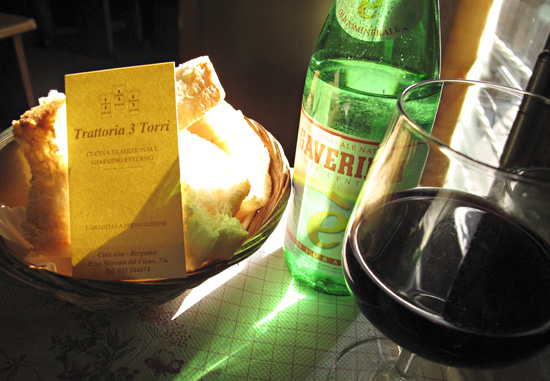
I was standing outside looking at the menu, and the proprietor, Casimiro, came to the door and smiled out at me. A smile goes a long way with me; to be in a foreign country and have someone reach out in that small way seals my decision of where to eat, shop, explore. A geniune smile is the universal entree to first connection.
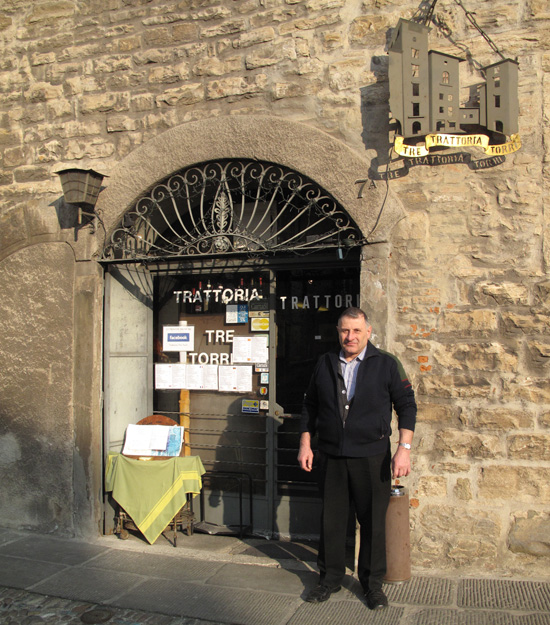
I’m sitting under vaulted stone ceilings eating a lovely polenta with sausage and porcini mushrooms with a hint of gravy. The sun is shining in onto my table, the first time I’ve seen and felt it in ages (more than a month?). As others enter the restaurant, he gives them a menu in their “madre lingua”, mother tongue. He gave me the menu in Italian. (That’s a compliment.)

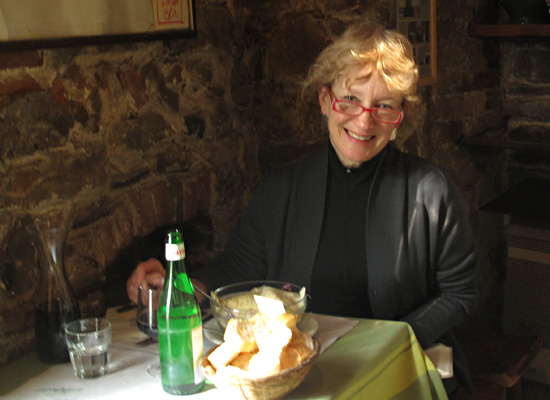
It’s now 2:00 p.m. Midday is a good time to have my main meal, come in and get warm sitting next to the heater with the sun in my eyes. And January is a perfect time to be exploring these places that would attract the tourists. It’s quiet and uncrowded. It’s much more relaxing.
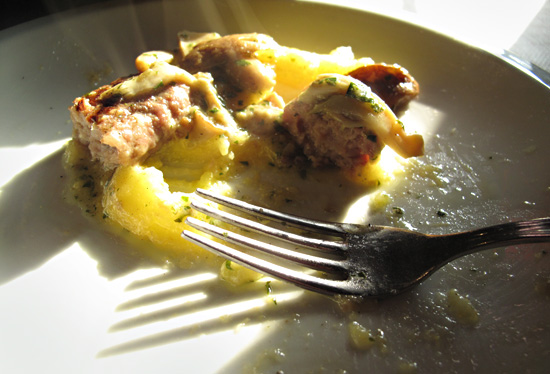
My heart and head are SO pulled by this history that reaches back to 1400 and further. To touch surfaces touched for centuries, to stride stone ways that have been stepped upon for so long. We simply do not have such history in the U.S. We do not have the remaining evidence to lay our hands on. Perhaps one day I might become inured to this, but at this point it makes me gasp repeatedly in disbelief. I cannot conceive of what I’m in the presence of.
The visual and physical richness here charges me. It excites me.
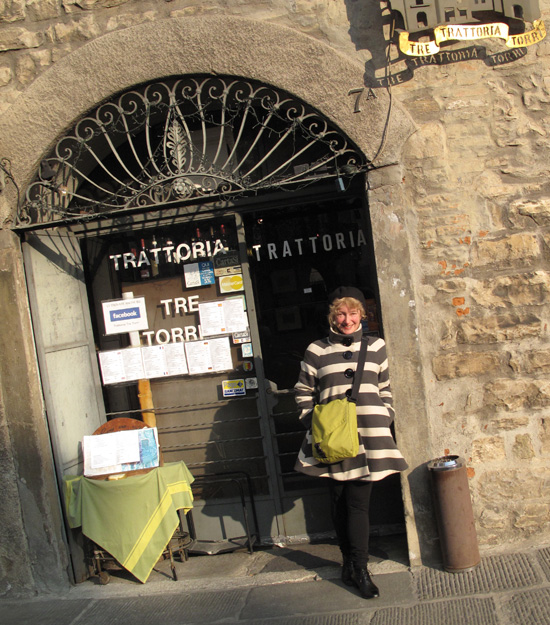
Trattoria 3 Torri • Cittá Alta, Bergamo
Piazza Mercato del Fieno, 7/a • Tel: 035-244474
Facebook: Trattoria Tre Torri
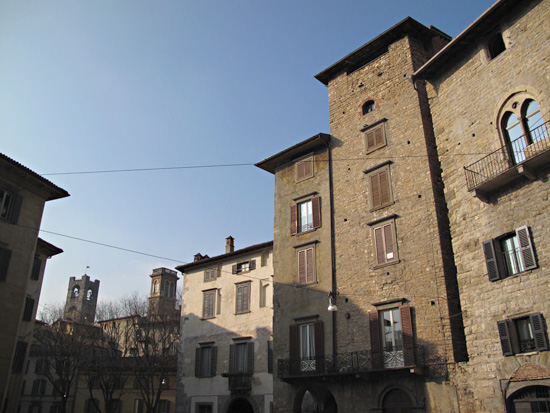
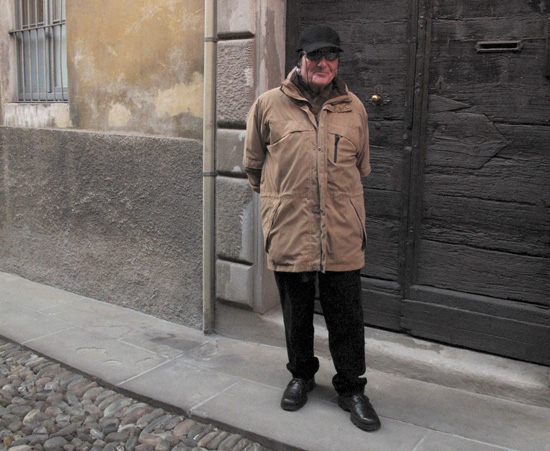
by Maureen | Jan 26, 2010 | Bergamo, Cheese, Discoveries, Featured Articles, Food!, Incredible Locations, Journal, Photos, Shopping & Markets
For 4 Euro and 20 cents – about $6.00 – each way, I was able to hop on the train and take a 45 minute ride to Bergamo, east-north-east of Milan.
Amazing amazingness. I’m still picking my chin up off the floor. I’m in awe that I can spend just a few dollars and in less than an hour be walking around in a walled city up on a hill, that was occupied by the Romans in the second century B.C.
They say that the name “Bergamo” has Celtic origins from the word “Bergheim”, “Home on the Mountain”. From what I read, the Celts inhabited the city and built the wall before the Romans took possession. And the story goes on from there.
I arrived at the train station in the “cittá bassa”, the lower city of Bergamo, then started walking in the direction of the upper city, the “cittá alta”. The two are quite separate and distinct from each other in appearance and identity. When I reached the lower “funiculare”, or tram station, I hopped on. I wanted to get UP.
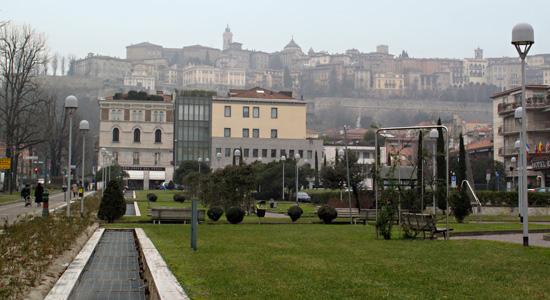
As I walked from the train station toward the “Cittá Alta” I caught this glimpse of the city above me.
By 11:00 in the morning I was walking on those roads made of upended, round cobbles. They’re actually quite uncomfortable to tread on, but they’ve also been designed with footpath-wide stripes of flat stone. How smart!
In these towns, it’s a thrill to wander the main route and browse the shop fronts, but also – even more so – to get away from main street and explore the back roads.
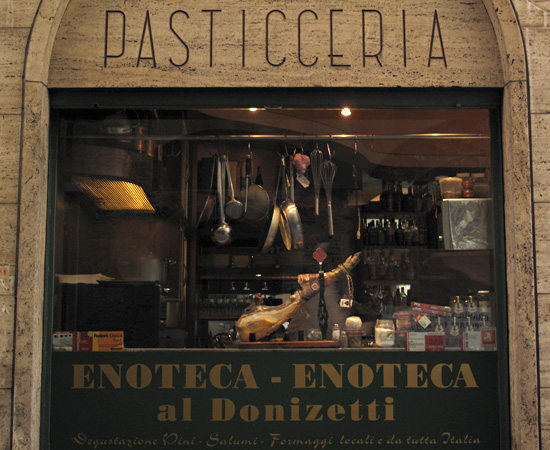
Would you ever see this in the U.S.? An animal’s leg, hoof-on, in the shop window? When a customer comes in, the store clerk steps over, carves away at the uncooked, aged hock, wraps up the meat and then goes on about the day.
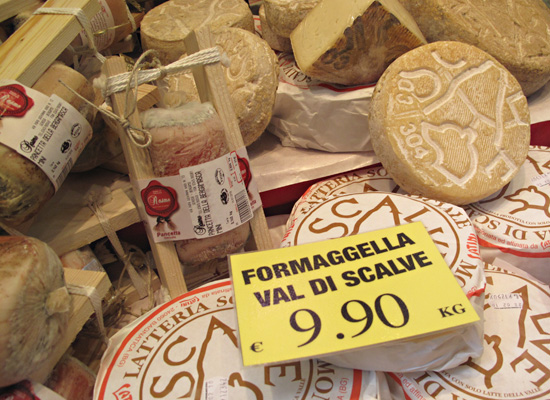
The imprinted cheeses are beautiful and I like the packaging on the (moldy) pancetta bound with wood.
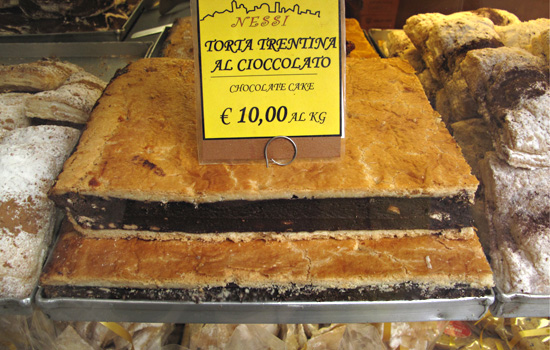
How could I NOT come back and buy some of this chocolate torte to bring home? It’s DENSE!
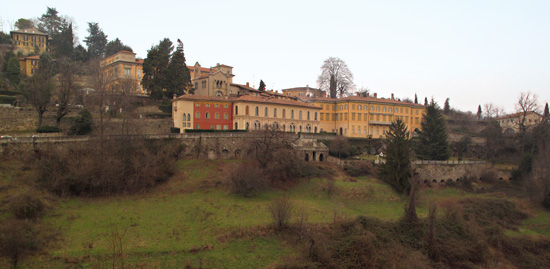
This is a view of the incredible places on the sweeping curve of the hillside, behind the wall.
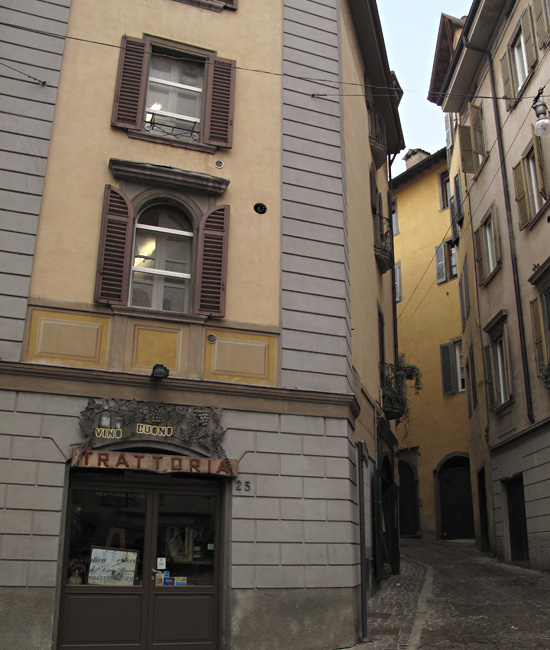
Towns like this beg to be explored, and the little “trattorie” beg to be sampled.
Bergamo reminds me of other places I’ve visited: San Gimignano, Siena, Venezia, Monteriggioni, Lucca, St. Angelo… There are hardly much more than footpaths in a rabbit warren fashion within the bounds of these cities. One car CAN fit on the streets of Bergamo, but just barely, and with difficulty if there’s also a pedestrian trying to get through. (Some of the cities I just listed don’t have any cars within them!) The narrow, shaded, no-end-in-sight passages generate such intrigue. What’s around the next bend?
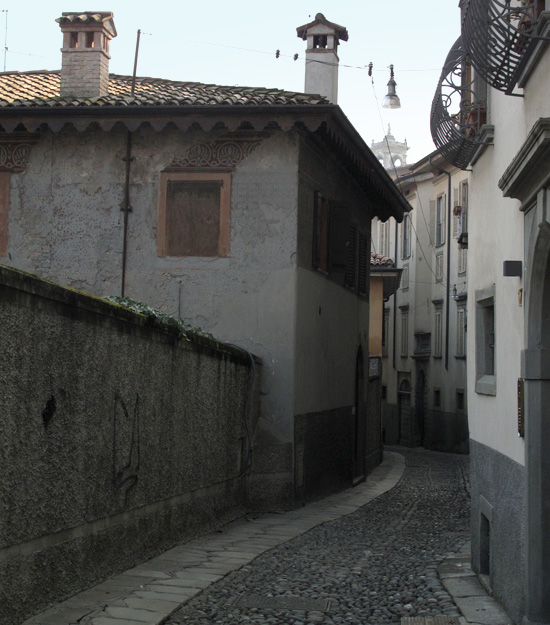
There’s fresco decoration just under the roofline of the house on the left. The round pebbles would provide good traction, but the flat stones at left are so much more comfortable to walk on.
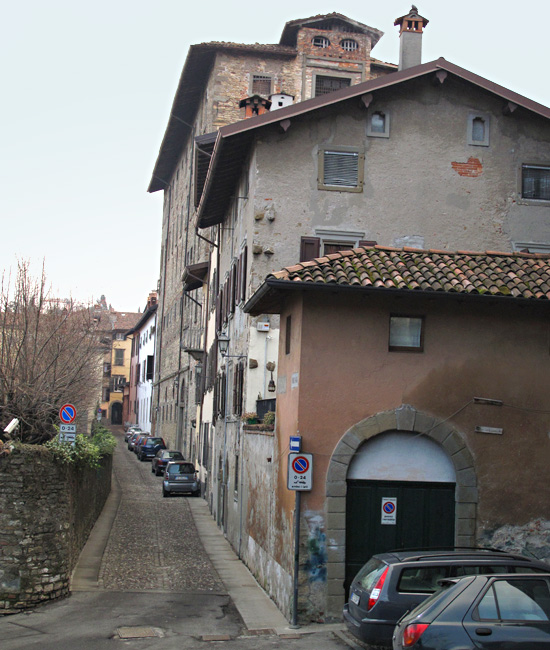
Park where you can. These homes look out over the valley below.
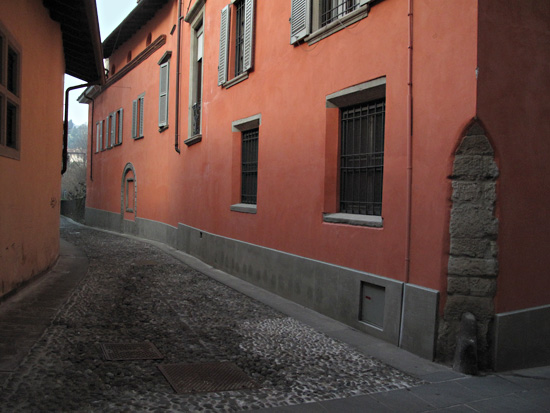
This is the side wall of the convent of the Domenican Nuns. I love their splash of color!
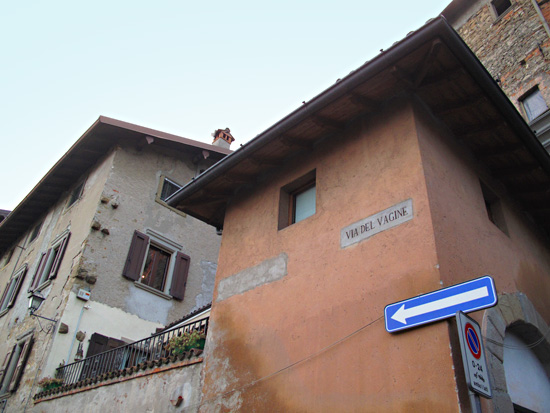
Why is the road leading to the convent called the “Way of the Vaginas”? (I’m sorry, but the question just had to be asked.)
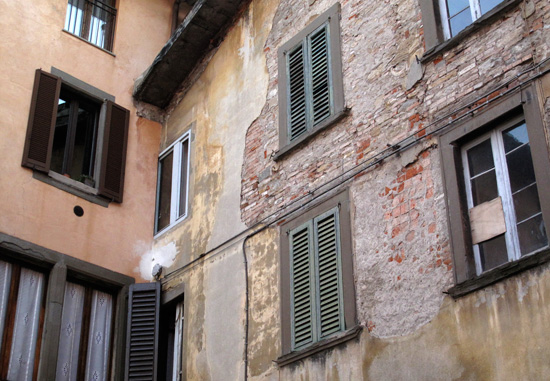
One of the things that so excites my mind is the layering of history in these towns, a result of demolition, restoration, remodeling, war destruction, weather, repair, embellishment.
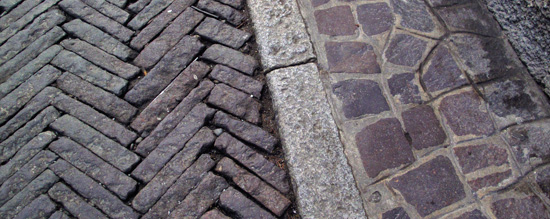
Left to right: street, curb and sidewalk.
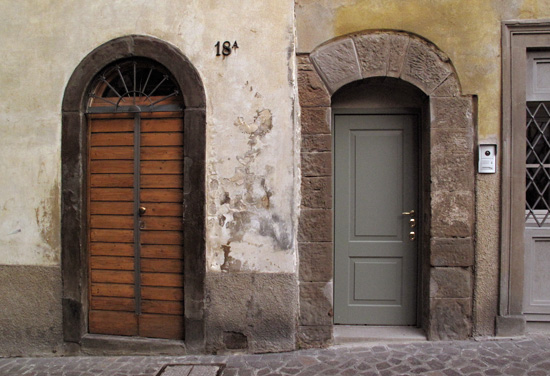
Some doors have fresh coats of paint. Some show the patina of wear, hand oils creating a sheen from use.
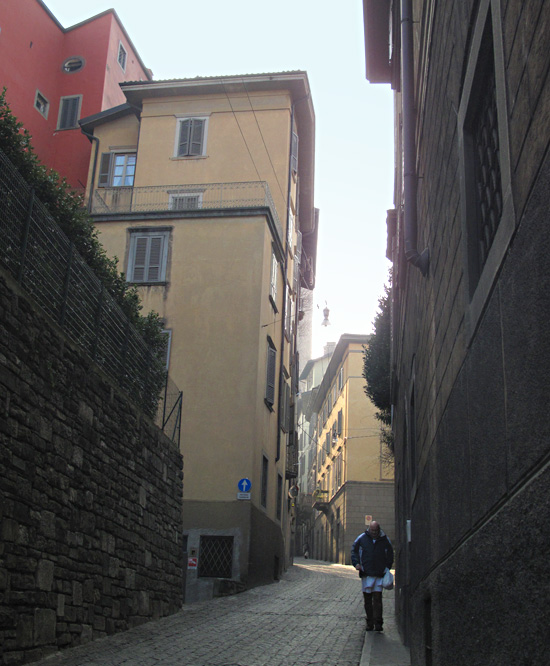
A walking town on a hillside. Ideal for one’s health.
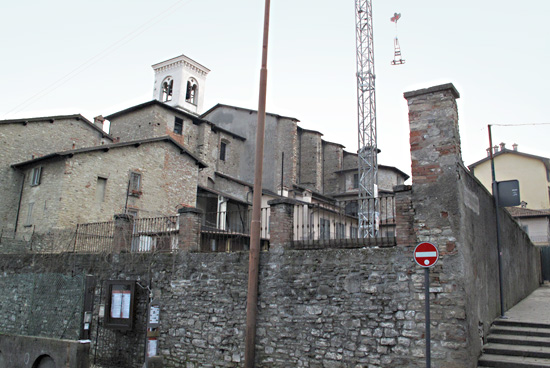
The construction crane is out of place with the old stone, but then again, it mimics the towers around it.
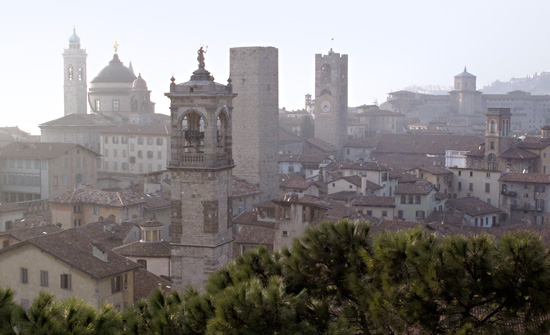
Late in the afternoon, I found my way to “La Rocca”, a tower, museum and military memorial. ALWAYS climb to the top of a tower in any city you visit!
At the end of the day, having explored the city and eaten a good meal, my camera battery was flashing red and I shot a few last images as the afternoon light waned. This door (below) caught my eye and demanded that I push the battery for just one more shot. When doing so, a man stopped to chat, saying that he, too, likes the old doors and is a sometime-painter. We talked about the longevity of wood versus stone and the absence of such ancient structures in the U.S. He asked where I’m from and when I told him I’m an American from Seattle, he said “But you speak such good Italian!” I smiled. We shook hands and wished each other well.

A painter that also loves the old doors.
by Maureen | Jan 20, 2010 | Discoveries, Food!, Journal, Shopping & Markets
I guess this blog site might be a turn-off to vegetarians. Sorry about that. I’m living in Italy. Not just meat, but RAW meat on the menu… and I eat it all. Shavings of raw lard. Ground up who-knows-what. Slices right off the moldy leg bone.
Bring it on.
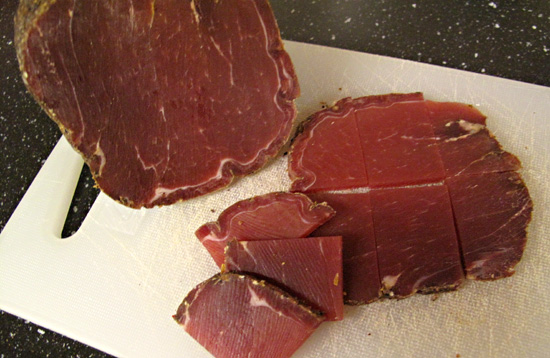
by Maureen | Jan 20, 2010 | Discoveries, Food!, Journal, Shopping & Markets
Mmm. It’s 10:00 p.m. and I just cut into a big chunk of Cinghiale Bresaola – uncooked, aged, wild boar meat. (Cinghiale: ching-GHYA-lay) Yum. So good. Peppered on the outside. Dense/firm. Deep red.

I bought it at the artisanal fair the beginning of last December when I sampled foods from every region in Italy. It’s been waiting for the right moment since then. The woman at the booth gave me samples of bresaola, lardo, prosciutto, salami… I didn’t need dinner that night!
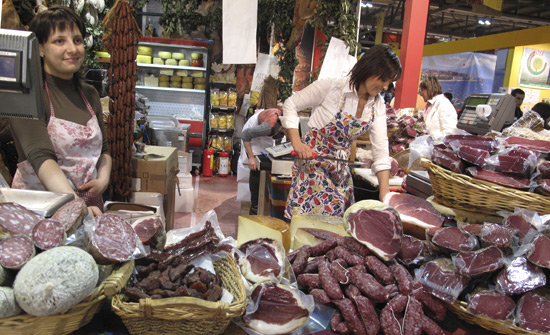
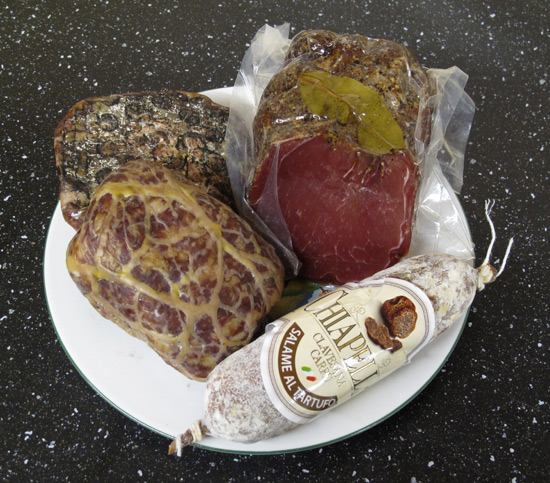
Here’s some further reading about cinghiale.
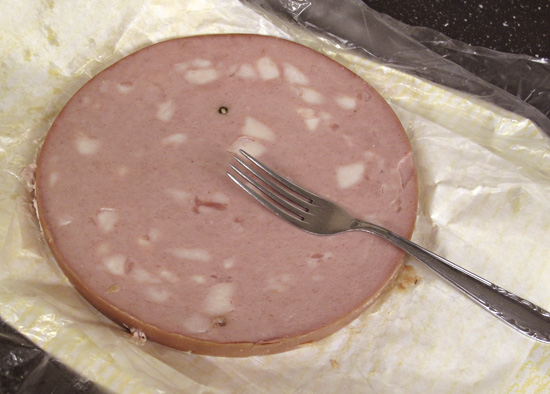
by Maureen | Jan 17, 2010 | Cheese, Discoveries, Featured Articles, Food!, Journal, Meals, Quips
This could easily be the next big thing. The new, chic food. All it would take is some hip New York restaurant to put it on the menu and spread the word. Or a Guru T.V. Show Chef to rave about it: The All-American Grilled Mortadella Burger.

You could cut a half inch thick slab of Mortadella into burger sized rounds, put those pieces on the grill with some wood chips for a little smokiness, then cook ’em hot ’til those little cubes of fat are translucent and dripping onto the coals. Flip those slabs and cook ’em some more.
You could go “classic” burger, with a white bun, cheddar cheese, tomato, lettuce, ketchup and yellow mustard. Or elevate the burger to gourmet on an artisan bun with some perfect Italian cheese, spicy/sweet mustard from the Trentino-Alto Adige region and a slice of tomato. Arugula instead of lettuce?
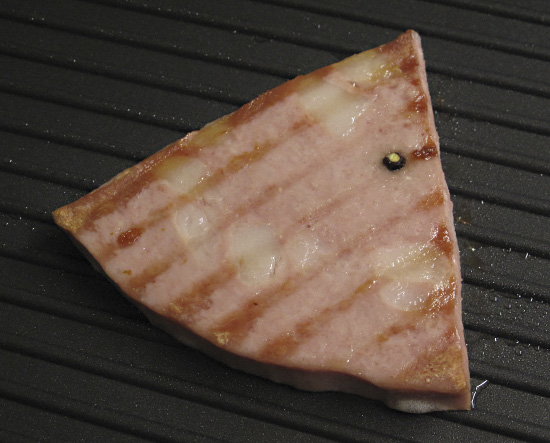
I usually see Mortadella as a sausage over 8 inches wide, scattered with lovely little cubes of fat throughout the ground “meat”. Peppercorns and pistachios are here and there throughout. Don’t call it “baloney”, although that’s the closest equivalent in the U.S.
Mortadella has origins in the town of Bologna and has been made for hundreds of years by very resourceful pig farmers unwilling to waste any part of the animal. Hmm. What does that say about what ends up inside the sausage casing? Do we want to know? Salt, peppercorns, seasonings, wine and pistachios are added to the 7:3 ratio of pork to fat. The Mortadella is cooked, then cooled.
For further information, check out this site: lifeinitaly.com

by Maureen | Jan 15, 2010 | Discoveries, Featured Articles, Food!, Graffiti & Street Art, Introspection, Journal, Photo of the Day, Photos
Walking past the bus stop, this ad stopped me in my tracks. McDonald’s. (A stranger in few parts of the world.) The assurance of 100% Italian Meat. The seared map of Italy on the big Mac meat patty. “When you eat our meat, it’s a whole other story, all Italian.
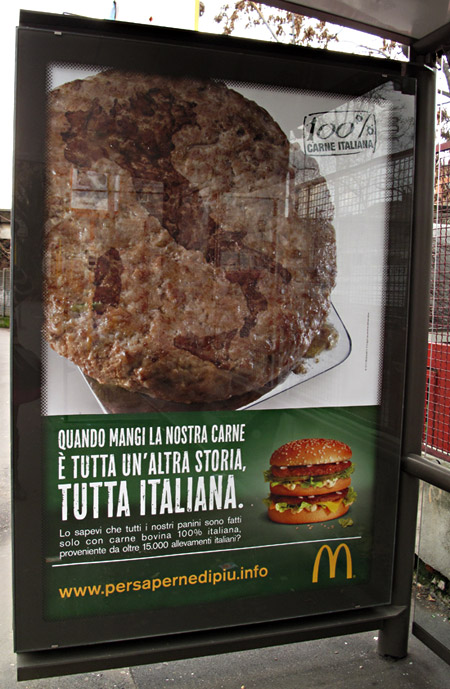
Here’s a link to their website.
As long as we’re on the subject of McDonald’s… When I was traveling around Toscana – Tuscany – a year and a half ago with 17 college students, there were two guys in the group, ages 19-20ish. I remember how relieved they were when we’d see a McDonald’s. “Finally! Food I can recognize!”, one of the guys exclaimed. What?! He didn’t recognize pizza, spaghetti or lasagne? He was in Italy, for God’s sake. This is the land of good food, and he was overjoyed at the sight of the golden arches!
While we were walking around Rome, we encountered one of those sidewalk-chalk-artists, redrawing a Botticelli painting on the asphalt. He must have been tired of answering “Where’s the ____ ?” questions, because he had these responses, with arrows, on the pavement next to him. I like his last answer: “So… you travel to a new country, famous all over the world for its food and wine, and you want to eat at McDonald’s…”
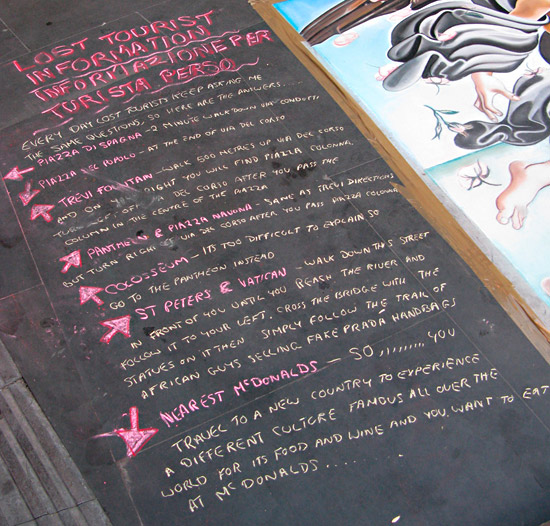
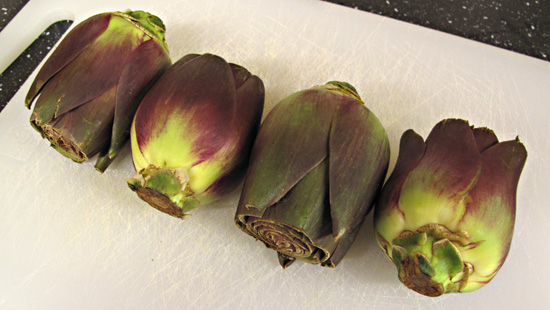
by Maureen | Jan 9, 2010 | Cheese, Christmas & New Year's Eve, Discoveries, Featured Articles, Food!, Journal, Meals, Photos, Shopping & Markets
Have you ever wondered about the first ones to eat something new that they hadn’t encountered before? IS it edible? What PART is edible? Should it be eaten RAW or COOKED? What part do you DISCARD? What part is most DELICIOUS? How is it best PREPARED? What should it be eaten WITH?
Traveling to and cooking in a foreign country is much like being a “primitive man” asking all those questions about newly encountered food items. But at least when you walk into a grocery store or step up to a market stall, someone has done the preselection for you and you’re not out in the woods trying to discern edibility. If it’s in the store, SOME part of it must be edible.
For the last couple of months I’ve been seeing these very small, young, almost-flower-like artichoke heads in the street markets and grocery stores. Very beautiful, but what do they DO with them?! I had no idea, and passed them up, regretfully. I had eaten marinated artichokes scooped out of little jars. Had steamed softball-sized heads and eaten them, leaf-by-leaf dipping the ends in butter. And I’ve eaten that sinfully fat-laden, hot dip with artichoke hearts, cheese, mayo and who knows what else. But I’d never done much else with them or seen them offered other ways. Yes, I’m sure the recipes and methods are out there, but the ones I just mentioned seem to be the across-the-board standards for eating artichokes.
On the evening of New Year’s Day, I was out walking around the Duomo and decided to have dinner out. I picked one of the few restaurants that were open, perused the menu and decided I HAD to have “Insalata di Carciofi Crudi” – Salad of Raw Artichokes! I ordered a “Pizza di Quatro Formaggi” – a four cheese pizza – to go with the salad, but that was secondary in my mind.
What arrived at my table was a bowl with paper thin shavings of very young, tender artichokes, including about an inch of the stem. They had been drizzled with a “fruttato” – “fruity” – extra virgin olive oil and lemon juice, sprinkled with salt and freshly ground pepper and tossed together with some thinly sliced grana cheese. Wow! Delicious! Simple, fresh in the middle of winter and quite a surprise. NOW I knew what could be done with those flowery artichokes.
Tonight, at the grocery store, I didn’t pass them up. They sold some untrimmed with thorny tips and 8 inches of stem, and they sold trimmed, packaged groups of 4. I considered the prices and how much would be thrown away from either and bought those that had been trimmed.
Usually, I would “just wing it” and approximate what I had tasted on New Year’s Day, but I decided to look online to see if there were any guidelines to follow. In doing so I found a handy Italian cooking website: Buonissimo.org. (Sorry. It’s all in Italian.) The recipe I found was what I had surmised and described above.

I removed the outer, half dozen tougher leaves and trimmed both ends to freshen them up. Then I cut the flower heads in half.
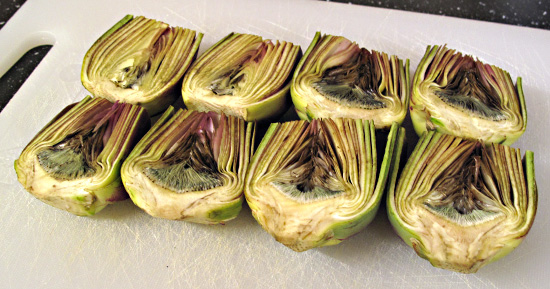
Since I don’t have a mandolin slicer here, I used my best Shun Tomato Knife, sharp and serrated, and sliced the artichokes as thinly as I could. (I left the furry inner parts, figuring they hadn’t gotten prickly.) I put it all in a bowl with the grana padano cheese (a nutty, almost sweet, hard cheese similar to parmesan), abundant lemon juice and extra virgin olive oil. Shook a little sea salt and grated some fresh pepper then gave it a gentle tossing.
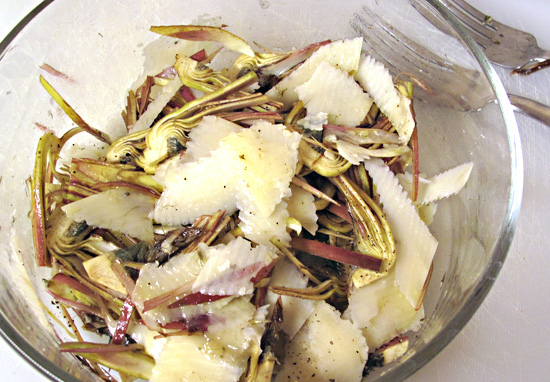
With my heaped serving of “Insalata di Carciofi Crudi”, I ate Norwegian, farm-raised salmon seasoned with Seattle’s Tom Douglas’ sweet/peppery Salmon Rub. The salad will become one of my new favorites. (If nothing else, it’s certainly good for the roughage!) But are the artichokian flowers available in the States?!
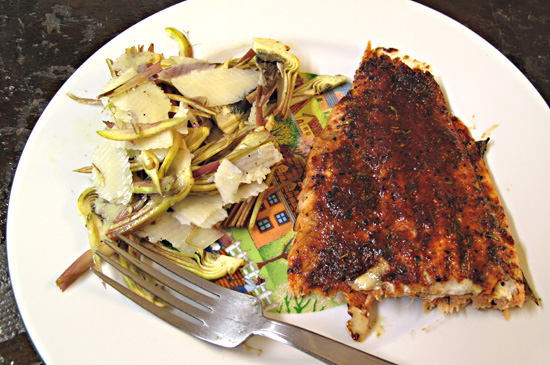
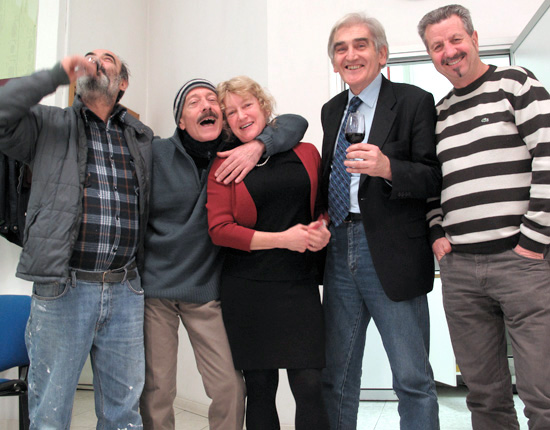
by Maureen | Jan 9, 2010 | Cheese, Discoveries, Featured Articles, Food!, Journal, Meals, People, Photos
“Maureen, there are a few of us having some appetizers and wine. Why don’t you come join us?”
It was Mario, the regional director for ONAV, the National Organization of Wine Tasters. We had met a few times at their wine-tasting events: Prosecco-tasting, Barbera- and Barolo-tasting, Champagne-tasting. I’m going to attend their 9 week course in wine-tasting, beginning in February. Any of their gatherings, formal or casual, are opportunities to sample some diverse and very special wines… and meet new people.
I took the Metro across town, walked two blocks and entered the ONAV classroom full of tables and chairs. These four guys – Michele, Vicenzo (giving me a choke-hold), Mario, Carlo – sat at a table cluttered with meats, breads, wine, oil and sweets. (The three are long-time friends of Mario, not with ONAV.) As you can see, it wasn’t a stuffy group.

We sampled a number of wines and also enjoyed a tasting of Extra Virgin Olive Oil from the San Gimignano region.
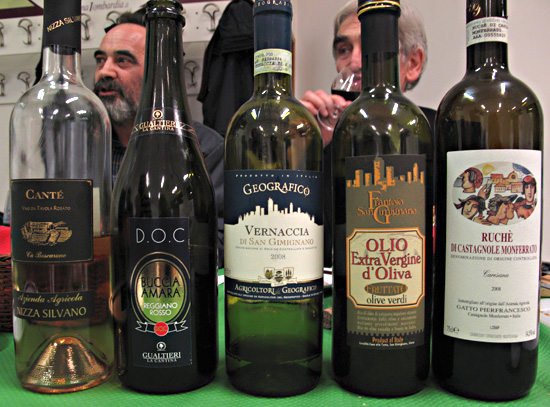
I didn’t realize until afterwards that I should have gotten a photo of Carlo in his striped sweater, with Vicenzo in his striped hat and me in my striped coat. It would have been a highly-visual photo. (Vicenzo asked if I know of any American women I could set him up with.)
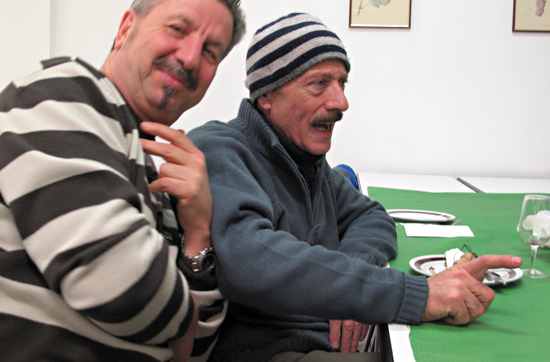
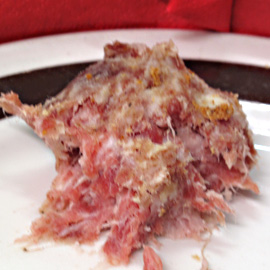 The table bore mortadella, salami and a raw, seasoned meat/fat combo that Mario simply peeled the casing off of and spread on bread. (I know the photo’s out of focus, but at least it gives you an idea of the meat’s appearance.) We ate from a large rustic loaf, a potato loaf, and Sicilian bread sticks and rounds.
The table bore mortadella, salami and a raw, seasoned meat/fat combo that Mario simply peeled the casing off of and spread on bread. (I know the photo’s out of focus, but at least it gives you an idea of the meat’s appearance.) We ate from a large rustic loaf, a potato loaf, and Sicilian bread sticks and rounds.
There was a bone-white spread of pecorino and ricotta cheeses pureéd together. And a special treat was the “Lardo di Colonnata”, raw, salted, herbed pig lard, aged at least six months and served as thin slices on bread. Mmm, good!
(I’ve become quite fond of eating raw meats and moldy cheeses.)
We drank a sparkling red, a white, a rosé. The most “startling” wine was the deep red Ruché (Roo-kay); I had never tasted anything like it with its very distinct flavor. (I’ll have a better vocabulary to describe it AFTER I take the class.) You could ask for Ruché* at your local specialty wine shop, but its very low production makes it unlikely that you’ll find any.
Our little post meal sweets were dried figs and apricots from Sicily, and almond pastilles that are frequently offered as favors at weddings. (In the States, too.)
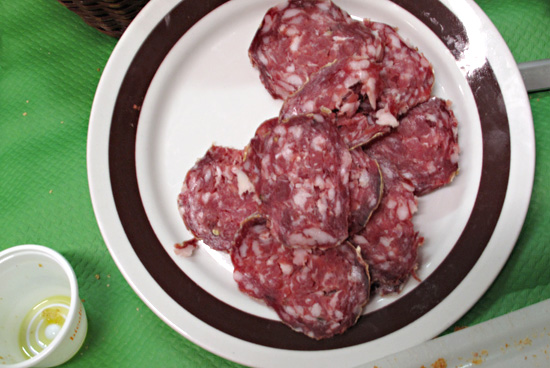
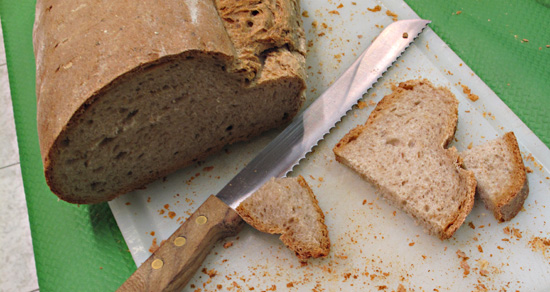
The very special end-note to the evening was a wonderful Passito di Pantelleria from the tiny little Island of Pantelleria, Italy, between Sicily and Tunisia. Passito, made from dried and shriveled moscato grapes, is a gorgeous amber color and a drink that requires every sip to be savored. I couldn’t keep my nose out of the glass; the scent was divine.
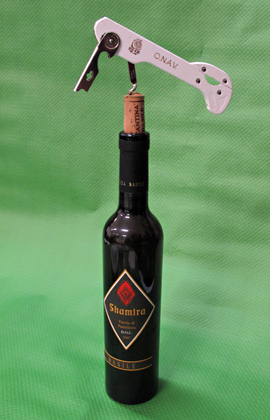
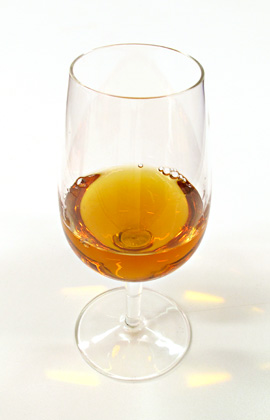
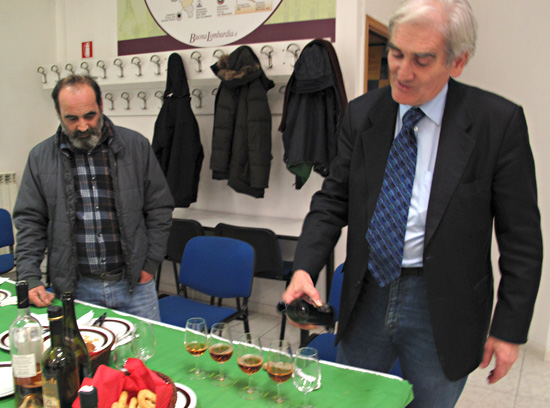
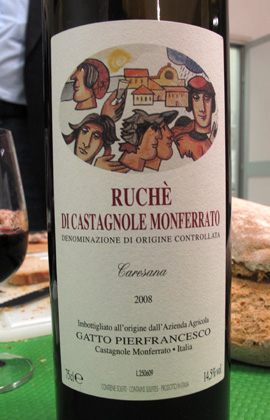
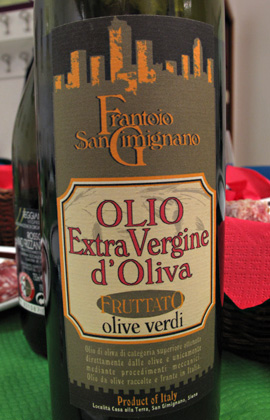
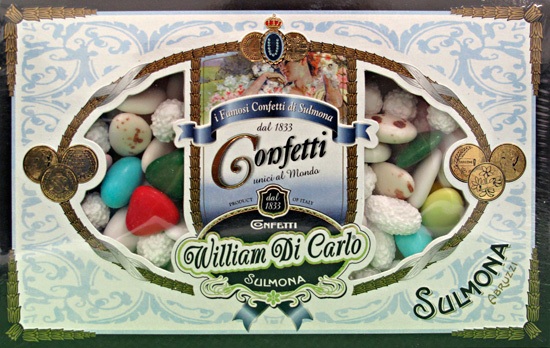
Below, on the right, is a bag of the not-fully-dried, shriveled moscato grapes used for making passito. You can eat them much like raisins.
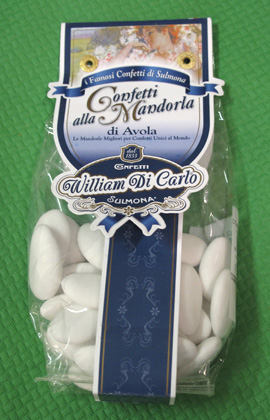
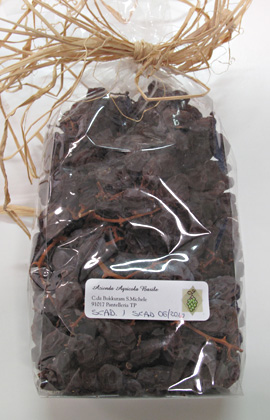
Ruché (from Wikipedia):
Ruché is a red Italian wine grape variety from the Piedmont region. It is largely used in making Ruché di Castagnole Monferrato, a small production red varietal winewhich was granted Denominazione di Origine Controllata (DOC) status by presidential decree on October 22, 1987. The current DOC recognized area of production for the wine, covers only about 100 acres [[40 hectares) of vines around the villages of Castagnole Monferrato, Refrancore, Grana, Montemagno, Viarigi, Scurzolengo andPortacomaro.[1] Ruché di Castagnole Monferrato is, therefore, one of the lowest production varietal wines in Italy. The grape is also grown to some extent in the neighboring province of Alessandria.
There is some debate about the origins of the Ruché grape. One theory is that the varietal is indigenous to the hills northeast of the town of Asti. Another theory is that the grape is a local variation on a French import. It has been grown in the area for at least one hundred years but has only recently been marketed and consumed outside of the immediate vicinity of its production. Ruché di Castagnole Monferrato tends to be medium bodied with notes of pepper and wild berries and floral aromason the nose.[2] The wine is often characterized by moderate acidity and soft tannins. In the Piedmont region it is often paired with slow-cooked beef, northern Italian cheeses and mushrooms.
































































